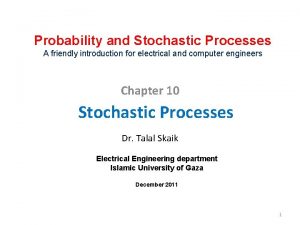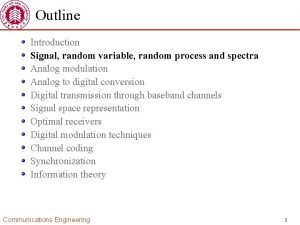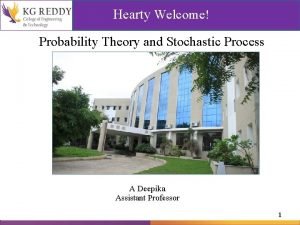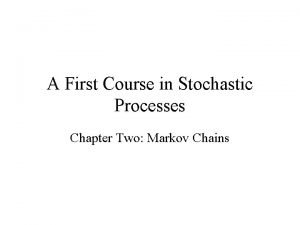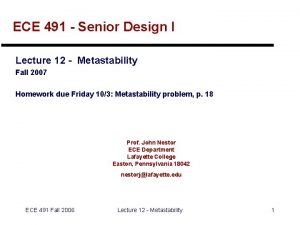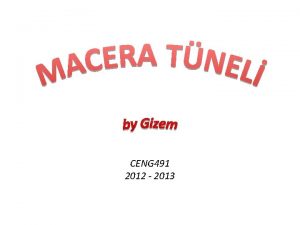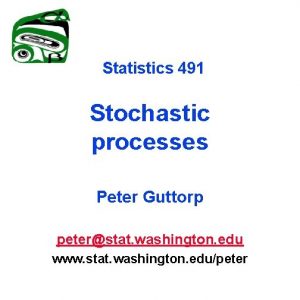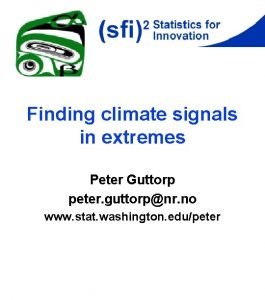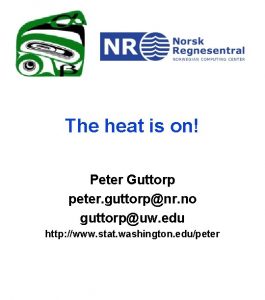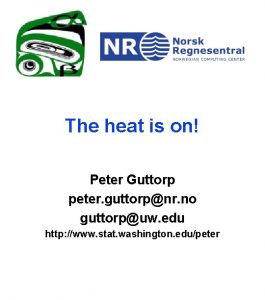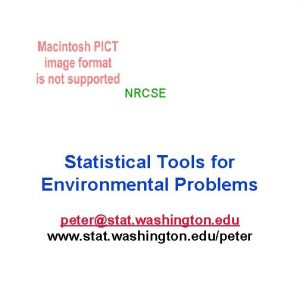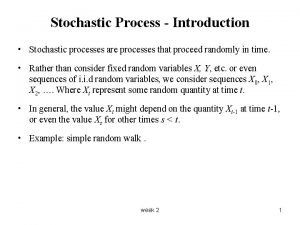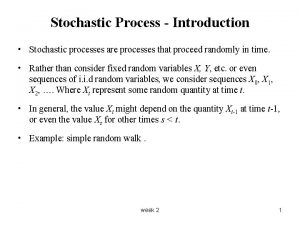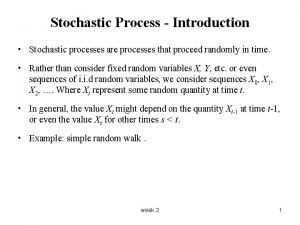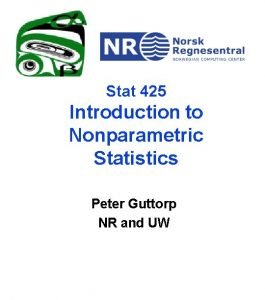Statistics 491 Stochastic processes Peter Guttorp peterstat washington










- Slides: 10

Statistics 491 Stochastic processes Peter Guttorp peter@stat. washington. edu www. stat. washington. edu/peter

Course outline 1. Stochastic models (wk 1) 2. Markov chains (wks 2 -6) 3. Birth-death processes (wks 7 -8) 4. Brownian motion (wks 9 -10)

Administrative details Class structure Wednesdays: lectures Fridays: lectures, problem sessions, homework discussion Homework Due Fridays One long-term homework due last day Exams Midterm Friday Oct 24 Final Thursday Dec 11 8: 30 -10: 30

Admin, cont. Class participation Grading 45% homework 20% midterm 30% final 5% class participation Text Grimmett and Stirzaker: Probability and random processes (Oxford) Ch 5, 6, 8, 13 Office hours M 2 -3; Th 11 -12

Stochastic models I have been working on Downscaling precipitation in climate models Hematopoiesis in cats Air quality and its health effects Setting environmental standards Biological monitoring of water quality Extreme temperatures as fingerprints for climate change Blowfly population modeling

Why stochastic models? How do we learn to understand unpredictable events? Sources of random behavior: Uncertainty about initial or boundary conditions Sensitivity to initial conditions Incomplete description Fundamental description

Adaptation vs spontaneous mutation Plate of E coli bacteria infected with bacteriophage T 1: most cells destroyed A few survive, offspring resistant to T 1 Adaptation hypothesis: Exposure needed to develop resistance Spontaneous mutation hypothesis: Random bacteria mutate to become immune

How tell them apart? Several small cultures of T 1 -sensitive E coli From each equal quantities put in Petri dishes containing T 1. Count surviving colonies (T 1 resistant) Adaptation: each bacterium has the same small probability to become resistant. Distribution of surviving colonies? Mutation: more resistant colonies if mutation happened early Consequences for variability?

What if some other explanation is better? Control group Do the same thing from a large culture. What variability would we expect?

Results Dish Same culture Different cultures 1 14 6 2 15 5 3 13 10 4 21 8 5 15 24 6 14 13 7 26 165 8 16 15 9 20 6 10 13 10 Same: mean 16. 7 var 18. 3 Diff: mean 26. 2 var 2410
